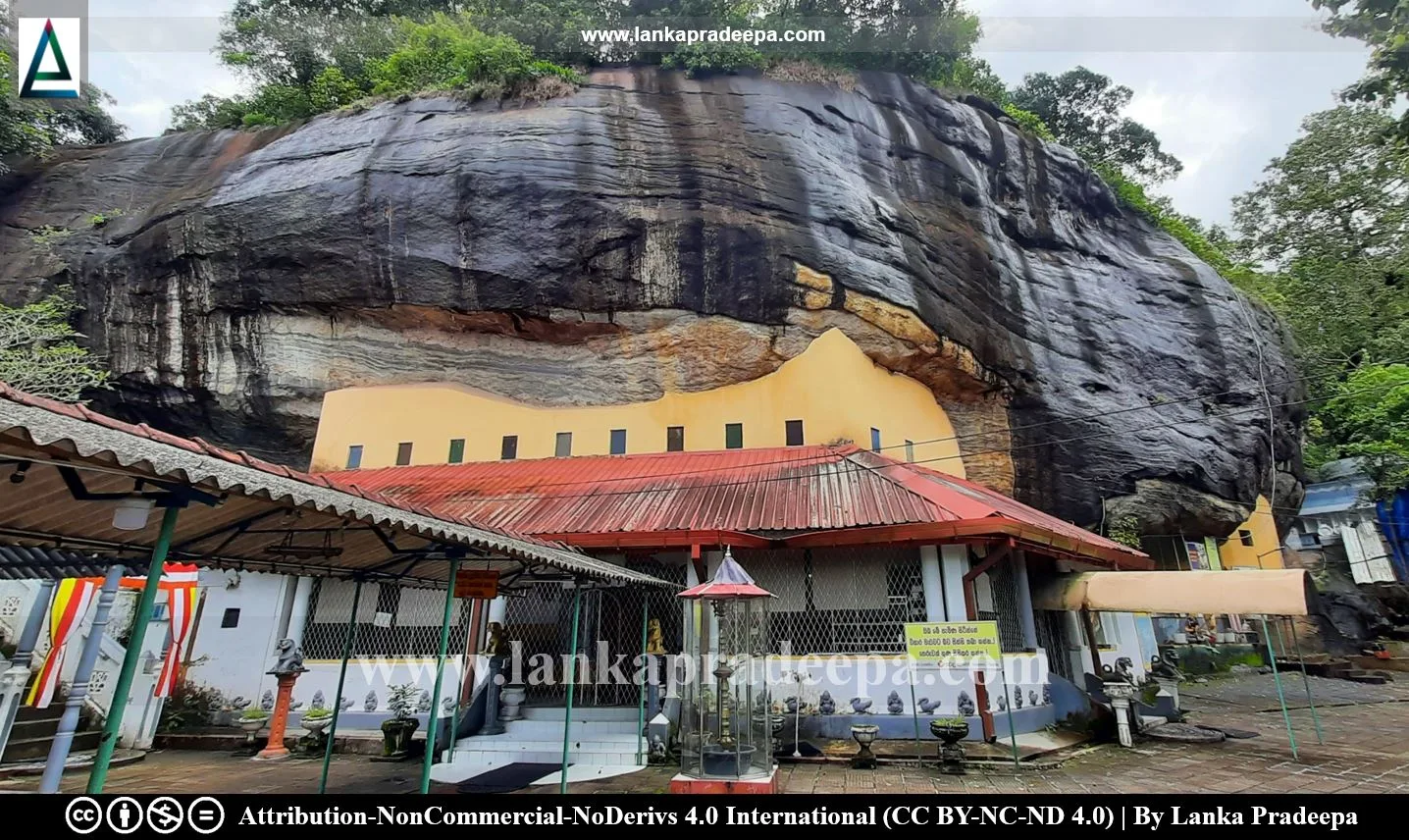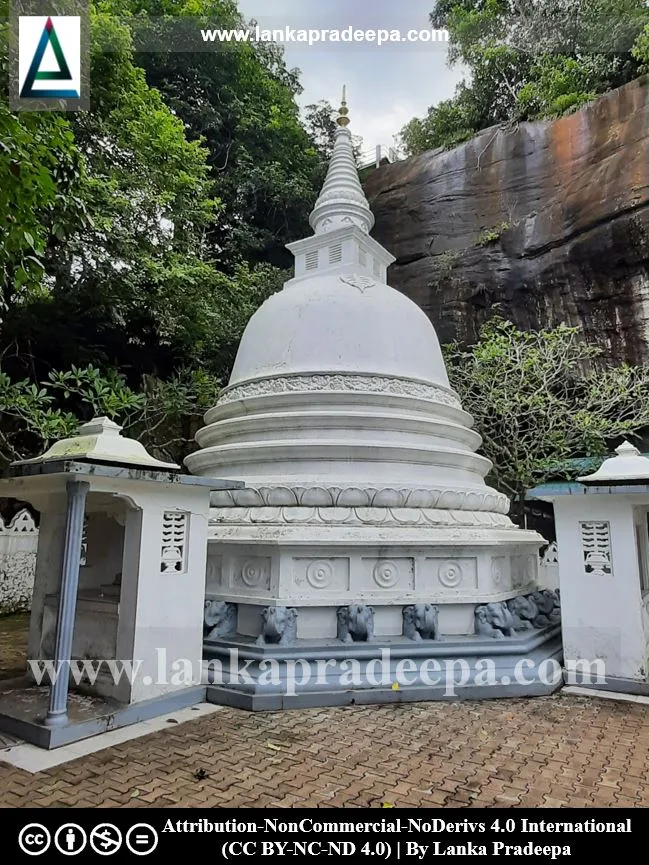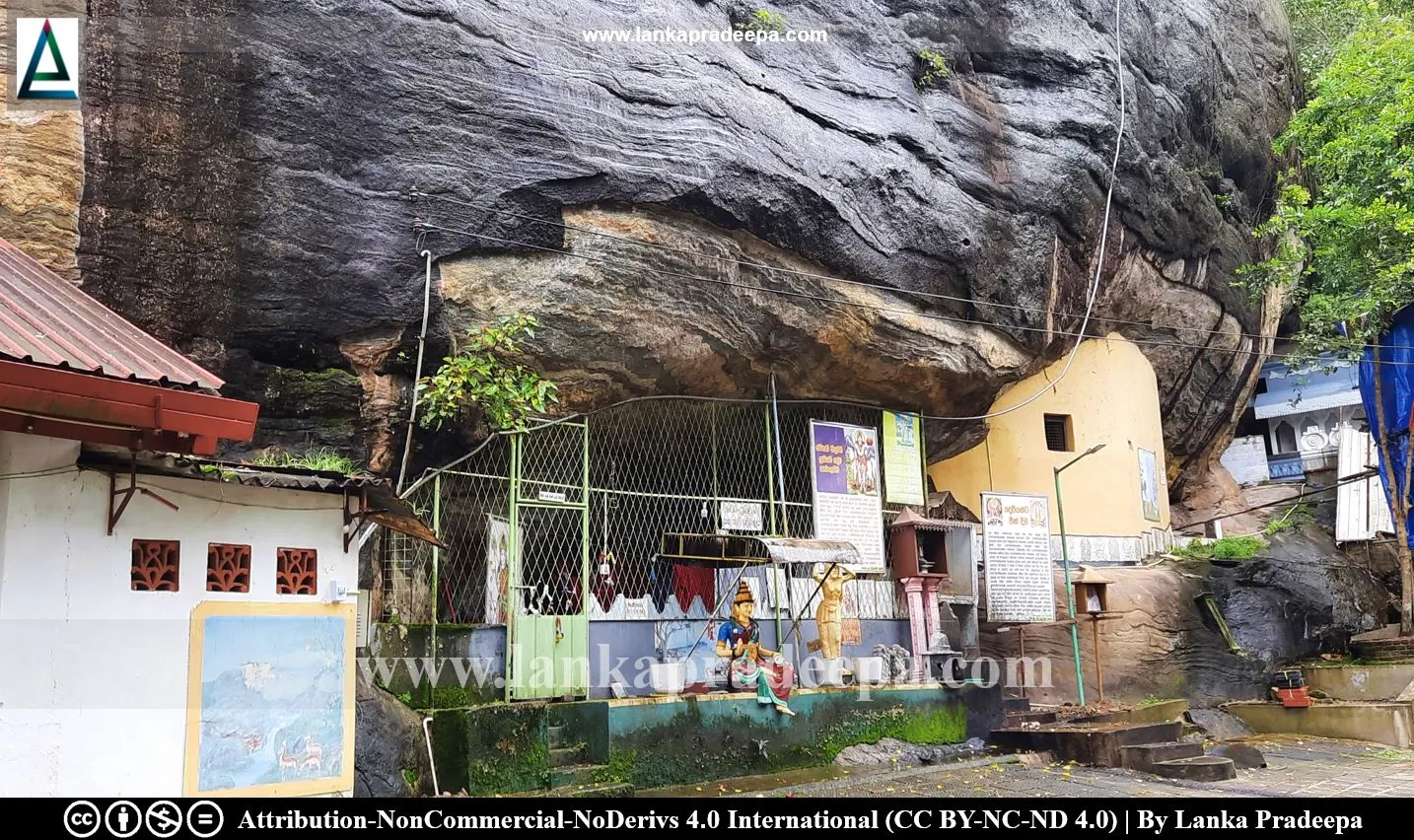
Korathota Raja Maha Viharaya (Sinhala: කොරතොට රජමහා විහාරය), also known as Shailarama Purana Viharaya is a Buddhist temple situated in Koratota village in Colombo District, Sri Lanka.
History
The history of this site goes back to the pre-Christian era. Two cave inscriptions written in Early Brahmi Scripts reveal that the caves of this site had been dedicated to the Buddhist monks during the early part of the Anuradhapura Period (Manathunga, 2016; Paranavitana, 1970; Rajapakshe et al., 2018).
Period: 2nd-1st century B.C.
Script & language: Early Brahmi | Old Sinhala
Transcript: Maharajhaha jhita Mahabiya lene agata-anagata catu-disha-shagasha niyate
Translation: The cave of Mahabi, daughter of the great king, is dedicated to the Sangha of the four quarters, present and absent
Notes: The king mentioned here is believed to be Mahasilu Maha Tissa (76-62 B.C.)
References: Manathunga, 2016; Paranavitana, 1970; Rajapakshe et al., 2018
Nampotha, an ancient text written after the 14th century mentions this temple as Bomiriya Viharaya. The Len-Viharaya (the image house in the cave) of the temple is believed to have been created during the Kandyan Period (Rajapakshe et al., 2018). However, due to recent renovations, the original appearance of the paintings and sculptures of this image house has disappeared (Rajapakshe et al., 2018).
During the Portuguese Period (1505-1658 A.D.), the upper rock of this site is said to have been used by locals as a Belum-gala [(a place of spying) Manathunga, 2016; Rajapakshe et al., 2018]. Also, the folklore mentions that there was a runnel between this site and the Kelani Ganga river (Manathunga, 2016; Rajapakshe et al., 2018).
A protected site
The drip-ledged caves and inscriptions in the Koratota Raja Maha Vihara premises, situated in Koratota village in the Divisional Secretary’s Division of Kaduwela are archaeological protected monuments, declared by a government gazette notification published on 22 November 2002.



.
References
1) Manathunga, S. B., 2016. Pauranika Sthana Saha Smaraka: Kolamba Distrikkaya (In Sinhala). Department of Archaeology (Sri Lanka). ISBN: 955-9159-39-9. pp.104-105.
2) Paranavitana, S., 1970. Inscription of Ceylon (Vol. I). Department of Archaeology Ceylon. p.86.
3) Rajapakshe, S.; Bandara, T. M. C.; Vanninayake, R. M. B. T. A. B. (Editors), 2018. Puravidya Sthana Namavaliya: Kolamba Distrikkaya (In Sinhala). Vol. I. Department of Archaeology (Sri Lanka). ISBN: 978-955-7457-19-2. pp.61-62.
4) The Gazette of the Democratic Socialist Republic of Sri Lanka. No: 1264. 22 November 2002.
2) Paranavitana, S., 1970. Inscription of Ceylon (Vol. I). Department of Archaeology Ceylon. p.86.
3) Rajapakshe, S.; Bandara, T. M. C.; Vanninayake, R. M. B. T. A. B. (Editors), 2018. Puravidya Sthana Namavaliya: Kolamba Distrikkaya (In Sinhala). Vol. I. Department of Archaeology (Sri Lanka). ISBN: 978-955-7457-19-2. pp.61-62.
4) The Gazette of the Democratic Socialist Republic of Sri Lanka. No: 1264. 22 November 2002.
Location Map
This page was last updated on 8 January 2023


